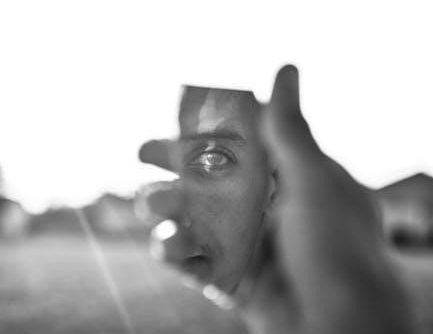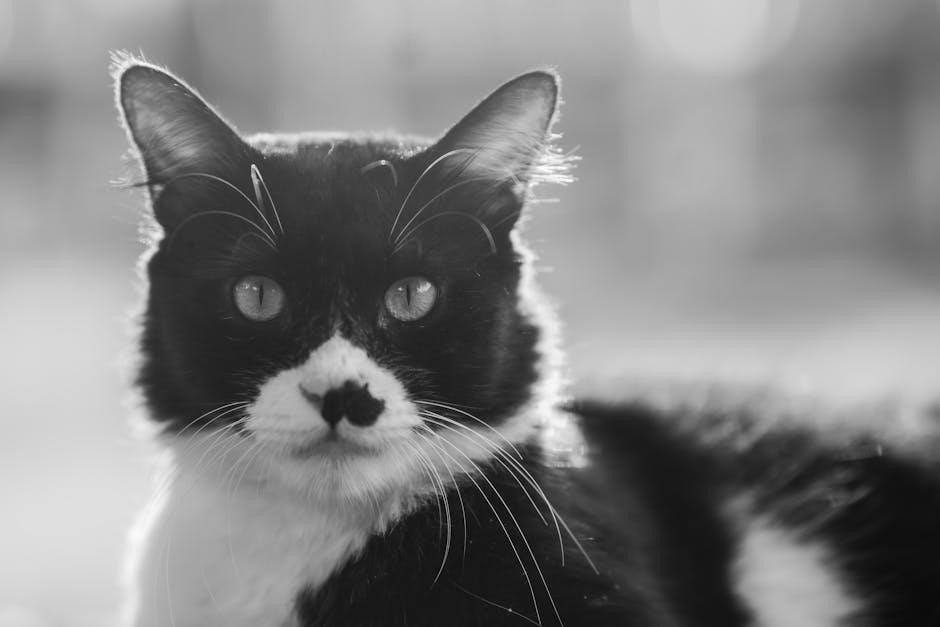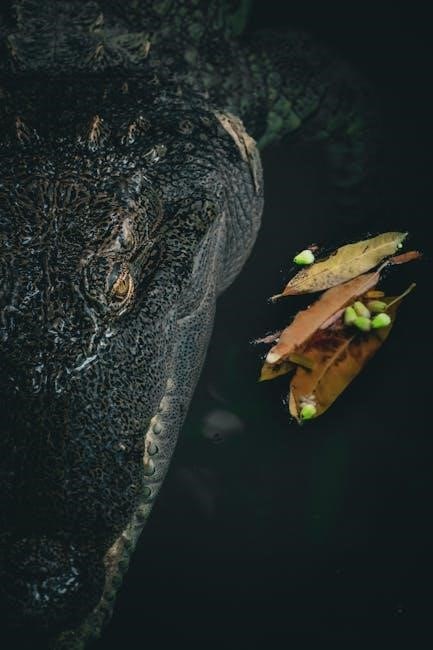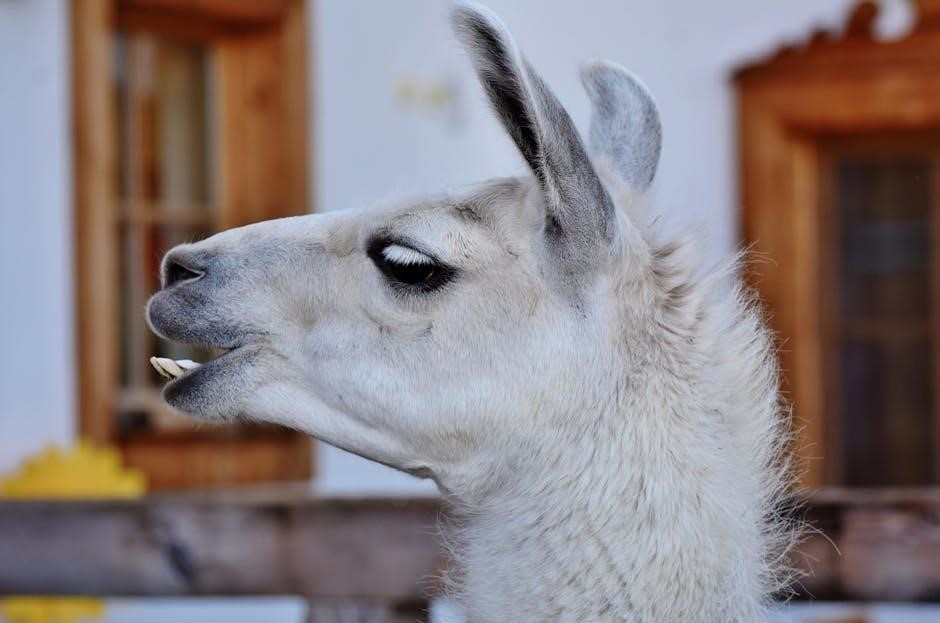
Toni Morrison’s debut novel, The Bluest Eye, published in 1970, explores themes of beauty, race, and identity in Lorain, Ohio, impacting African American literature significantly.
1.1 Overview of the Novel
The Bluest Eye, Toni Morrison’s debut novel, published in 1970, is set in Lorain, Ohio, and revolves around Pecola Breedlove, a young African American girl. The story explores her tragic journey as she yearns for blue eyes, symbolizing societal beauty standards. The novel delves into themes of race, identity, and internalized racism, highlighting how these forces shape Pecola’s life and her community. Morrison’s vivid portrayal of the Breedlove family’s struggles and the broader societal issues creates a haunting narrative, ultimately leading to devastating consequences. The book remains a powerful critique of racial and beauty ideals.
1.2 Historical Context and Background
The Bluest Eye is set in Lorain, Ohio, during the 1940s, reflecting post-Depression era struggles and racial tensions. Morrison, born in Lorain, draws from her hometown’s history, where African Americans faced systemic racism and economic hardship. The novel captures the societal beauty standards of the time, emphasizing whiteness as the ideal. This backdrop shapes the characters’ experiences, particularly Pecola Breedlove’s longing for blue eyes, a symbol of unattainable white beauty. The historical context underscores the novel’s exploration of racial identity and internalized racism, resonating with the broader African American struggle of the era.

Major Themes in “The Bluest Eye”
The novel explores themes of beauty, race, and identity, revealing how societal beauty standards marginalize African Americans, while internalized racism exacerbates their struggles profoundly.
2.1 Beauty and Identity
In The Bluest Eye, Morrison examines how societal beauty standards, rooted in whiteness, distort self-perception among African Americans. Pecola Breedlove’s longing for blue eyes symbolizes her internalized racism, reflecting the community’s acceptance of white beauty as superior. This ideal, unattainable for black characters, fosters self-loathing and identity fragmentation. Morrison critiques the destructive impact of these beauty norms, which erode self-worth and perpetuate racial self-contempt, highlighting the profound psychological toll on individuals and communities.
2.2 Race and Racism
Race and racism are central to The Bluest Eye, as Morrison portrays a society where racial hierarchies dominate. The novel illustrates systemic racism’s impact on African Americans, fostering internalized hatred and self-loathing. Pecola’s desire for blue eyes mirrors the broader community’s acceptance of white superiority, a theme Morrison critiques as deeply destructive. The narrative exposes how racial oppression permeates every aspect of life, from economic disparities to personal relationships, highlighting the enduring scars of racism on individuals and communities, and challenging the notion of white beauty as the ultimate ideal.
2.3 The Impact of Internalized Racism
Internalized racism in The Bluest Eye manifests as self-loathing and acceptance of white beauty standards. Pecola Breedlove’s desire for blue eyes symbolizes her internalization of racial inferiority, reflecting societal messages that devalue Blackness. Morrison illustrates how this self-hatred corrodes individual and communal identity, leading to emotional and psychological destruction. The community’s complicity in these ideals further perpetuates the cycle, as characters like Pauline Breedlove and Geraldine perpetuate notions of white superiority. Morrison critiques this internalization as a destructive force, highlighting its intergenerational impact and its role in perpetuating racial inequality.

The Community and Its Role
The community in Lorain, Ohio, reflects racial tensions and beauty ideals, influencing characters like Pecola Breedlove, who face judgment and rejection, perpetuating internalized racism and self-doubt.
3.1 The Setting: Lorain, Ohio
Lorain, Ohio, Toni Morrison’s hometown, serves as the backdrop for The Bluest Eye. The setting reflects the racial and social tensions of the 1940s, shaping the characters’ experiences. The community’s judgmental nature and adherence to white beauty standards deeply influence Pecola Breedlove’s desire for blue eyes. Morrison portrays Lorain as a place where internalized racism thrives, highlighting how the environment perpetuates self-doubt and destruction. The setting is crucial in illustrating the societal forces that contribute to the novel’s tragic outcome.
3.2 The Breedlove Family and Their Struggles
The Breedlove family embodies the destructive power of internalized racism and poverty. Pecola, Cholly, and Pauline struggle with self-worth, perpetuating a cycle of abuse and neglect. Cholly’s inability to provide and his violent outbursts stem from his own trauma, while Pauline’s obsession with her employer’s family reflects her internalized inferiority. Pecola’s desire for blue eyes symbolizes her longing for acceptance in a world that devalues her. Their fragmented family dynamics illustrate Morrison’s critique of how societal oppression erodes individual and familial well-being, leading to devastating consequences.

The Title and Its Significance
The title reflects Pecola’s desire for blue eyes, symbolizing her quest for societal validation and the destructive impact of internalized beauty ideals.
4.1 The Symbolism of the “Bluest Eye”
The “bluest eye” symbolizes societal beauty standards and racial self-loathing. Pecola’s desire for blue eyes represents her internalized racism and the belief that whiteness equals beauty. This unattainable ideal reflects the destructive nature of Eurocentric beauty norms imposed on African Americans. The blue eye serves as a metaphor for the external validation Pecola seeks, highlighting the psychological damage caused by racial and beauty hierarchies; Morrison uses this symbol to critique the internalization of oppression and its devastating effects on self-esteem and identity.
4.2 The Connection to Pecola Breedlove
Pecola Breedlove’s desire for blue eyes embodies her internalized racism and quest for societal acceptance. The “bluest eye” symbolizes her wish to transcend her blackness and attain white beauty standards. This longing stems from her desire to be loved and validated, reflecting the destructive impact of racial hierarchies. Pecola’s pursuit of this unattainable ideal leads to tragic consequences, highlighting the devastating effects of self-hatred and the societal constructs of beauty. Her story underscores the psychological toll of internalized racism on African Americans, particularly young black girls.
Character Analysis
In The Bluest Eye, Pecola Breedlove and Claudia MacTeer embody contrasting experiences of race, beauty, and identity, shaping the novel’s exploration of societal and internal conflicts.
5.1 Pecola Breedlove: The Protagonist
Pecola Breedlove is the tragic protagonist of The Bluest Eye, a young Black girl consumed by internalized racism and a longing for blue eyes. Her desire for blue eyes symbolizes her wish to escape the societal rejection and ugliness she feels. Pecola’s journey reveals the devastating impact of racial self-hatred and the absence of love in her life. Her descent into madness underscores the destructive power of internalized oppression and the community’s complicity in her suffering, making her a poignant symbol of racial and emotional pain.
5.2 Claudia MacTeer: The Narrative Voice
Claudia MacTeer serves as the narrative voice, offering a child’s perspective on the events of the novel. Her innocence contrasts with the harsh realities of Pecola’s life, providing a unique lens through which the story unfolds. Claudia’s observations highlight the societal pressures and racial biases that shape her community. Her voice adds depth and immediacy to the narrative, while her character evolves from a naive child to one beginning to understand the complexities of race and beauty, enriching the exploration of thematic elements in The Bluest Eye.
Narrative Structure and Style
Morrison’s narrative structure blends non-linear storytelling with multiple perspectives, creating a poetic and evocative style that deeply explores the characters’ emotional landscapes.
6.1 Non-Linear Narrative
Toni Morrison employs a non-linear narrative in The Bluest Eye, weaving past and present to reflect the fragmented lives of its characters. This structure mirrors the disintegration of Pecola Breedlove’s reality, as her story unfolds through multiple timelines. The novel’s non-chronological approach emphasizes the cyclical nature of trauma and memory, allowing readers to piece together the narrative alongside the characters. This technique creates a sense of inevitability, underscoring the devastating consequences of internalized racism and societal beauty standards. Morrison’s use of non-linearity enhances the emotional depth and complexity of the story, drawing readers into the characters’ visceral experiences.
6.2 The Use of Multiple Perspectives
Toni Morrison’s The Bluest Eye utilizes multiple perspectives to create a rich, layered narrative. The novel shifts between Claudia MacTeer’s youthful voice and an omniscient narrator, offering diverse viewpoints. This technique allows readers to witness events from different characters’ experiences, enhancing the exploration of themes like beauty, race, and identity. By presenting varying perspectives, Morrison highlights the complexity of societal norms and their impact on individuals. This storytelling method deepens the emotional resonance and provides a multifaceted understanding of the characters’ struggles and the community’s role in their lives.

The Legacy of the Novel
The Bluest Eye remains a landmark in African American literature, celebrated for its raw portrayal of race, identity, and societal oppression, leaving a lasting impact on literary discourse.
7.1 Critical Reception and Controversies
Toni Morrison’s The Bluest Eye received both critical acclaim and controversy upon its release. Critics praised its unflinching exploration of race, beauty, and trauma, while others criticized its graphic content. The novel’s depiction of incest, racism, and child molestation sparked debates, leading to challenges in schools and libraries. Despite this, Morrison’s precise prose and emotional depth earned her a Nobel Prize and a Pulitzer for Beloved. The book remains a pivotal work in African American literature, challenging societal norms and fostering essential conversations about identity and oppression.
7.2 The Novel’s Impact on African American Literature
The Bluest Eye significantly influenced African American literature by addressing race, beauty, and identity with unflinching honesty. Morrison’s work challenged traditional narratives, offering a raw portrayal of black experiences. The novel’s exploration of internalized racism and societal beauty standards resonated deeply, inspiring future authors to confront similar themes. Its inclusion in academic curricula has ensured its lasting relevance, cementing Morrison’s legacy as a pioneering voice in African American literature and fostering a broader understanding of racial and cultural identity in society.
The Bluest Eye remains a powerful exploration of race, beauty, and identity, offering profound insights into societal oppression and self-perception, ensuring its enduring relevance today.
8.1 Summary of Key Points
Toni Morrison’s The Bluest Eye explores themes of beauty, race, and identity, set in Lorain, Ohio, highlighting the destructive impact of internalized racism. The novel centers on Pecola Breedlove, a young Black girl seeking validation through white beauty standards. Morrison’s non-linear narrative and multiple perspectives reveal the community’s complicity in perpetuating these ideals. The novel’s controversial themes, including incest and racism, have sparked debates but also solidified its importance in African American literature. Its exploration of societal oppression and self-perception remains deeply relevant today.
8.2 The Relevance of “The Bluest Eye” Today
The Bluest Eye remains a timeless critique of societal beauty standards and racial oppression, resonating deeply in today’s context. Morrison’s exploration of internalized racism and self-hatred continues to reflect contemporary struggles with identity and systemic inequities. The novel’s themes of trauma, marginalization, and the quest for validation are particularly relevant amid ongoing discussions about race, diversity, and representation. Its unflinching portrayal of societal ills underscores the need for introspection and change, making it a vital work in understanding the enduring impact of historical and cultural biases.